Nano House 2021 Competition challenges architects and designers to create a small scale home with optimal space efficiency for two working adults of any age group. The proposed layout should meet all the needs of its inhabitants.
It can also serve as a makeshift temporary yet comfortable space that could be an addition to the home. The design proposed should be bigger than life not just in size but also in the impact it will create on those who inhabit the space. Source and images Courtesy of Volume Zero.
- First Place – Mortise N Tenon by Ravi Dhaka – Aditya Gupta – Mohd Ahmad Farooqui (India)
A house without any boundaries designed with the intention to merge indoor seamlessly in the surroundings adapting to the environment, built to be a part of the site, used as a weekend getaway house or an observation house in the orchards.

The concept was to design a house with no walls with functional spaces in the center and peripheral circulation to create a unhindered open house with views and extendable patio to work in the outdoors
The house is designed to be a modular unit that can be but anywhere with the help of wooden joints. The house contains sleeping, cooking, and living space for two people which can be expended as a part of surrounding environment.
- Second Place – The Folding House by Liu Yu – Han Fusen (China)
Our chosen clients are a couple, a pair of bookstore owners who like to hovel. They love reading and traveling and they have always had a dream: to drive a mobile library van, room around China and share books with more people. We hope to help perfect their dreams. Our design draws Masons from the ancient people’s use of folding screens. First, this temporary building can appear in any different places under the office building in the city square, beside the rural rice fields.

Secondly, all facades are not only transformed into flexible walls, but also a way of integrating scenery, books and people’s stories. There to the space boundary is no longer just divided but shared, so that more interesting people can share their stories through books
- Third Place – The Water House by Yee Foo Lai – Chengcheng Huang – Jessica Chang (United States)
Situated in a tropical area of heavy rainfall, the Water House is a healing space that is inspired by ancient bathhouses. Though most dwellings are built to shield inhabitants from rainwater, we have designed the Water House to embody the philosophy that water should be embraced. In the Water House, water permeates the inhabitant’s daily, lived experience, symbolizing the acceptance of and connection to nature as the most intuitive healing property.

The central water vessel is designed to be a space of healing. Light generously pours through an opening in the roof, and rainwater falls into the shower, a sacred space for renewal and a reawakening of the senses. Sonically, water trickles down the black metal plates that enclose the surface, producing music that purifies the mind and soothes the soul.
- 10 Honorable Mentions
- TI CAZ PECHEUR by Roumieu Marius – Rajosoa Anthony (France)
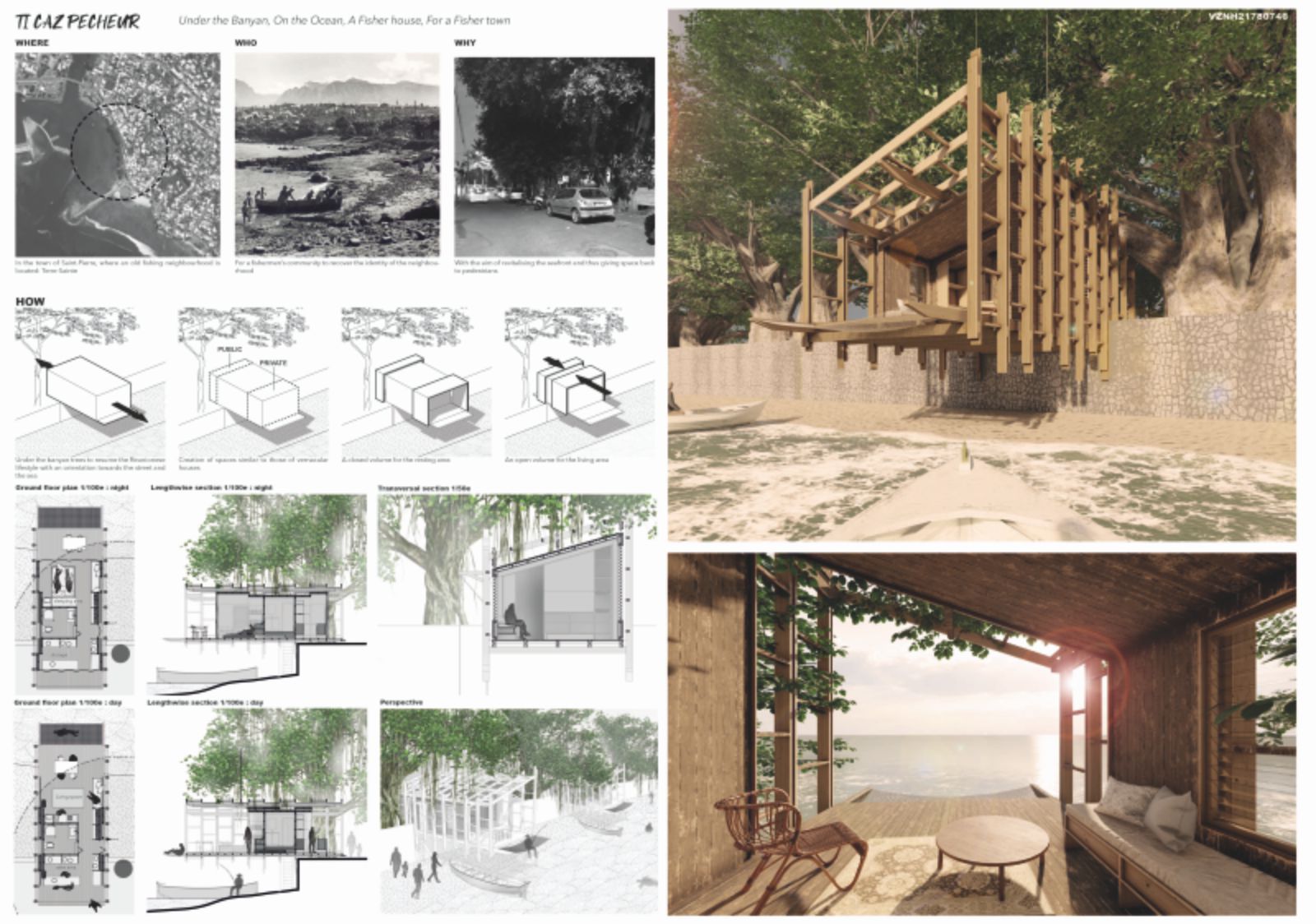
- Filling in the GAP – Tan Yong Han – Tyson Tan (Malaysia)
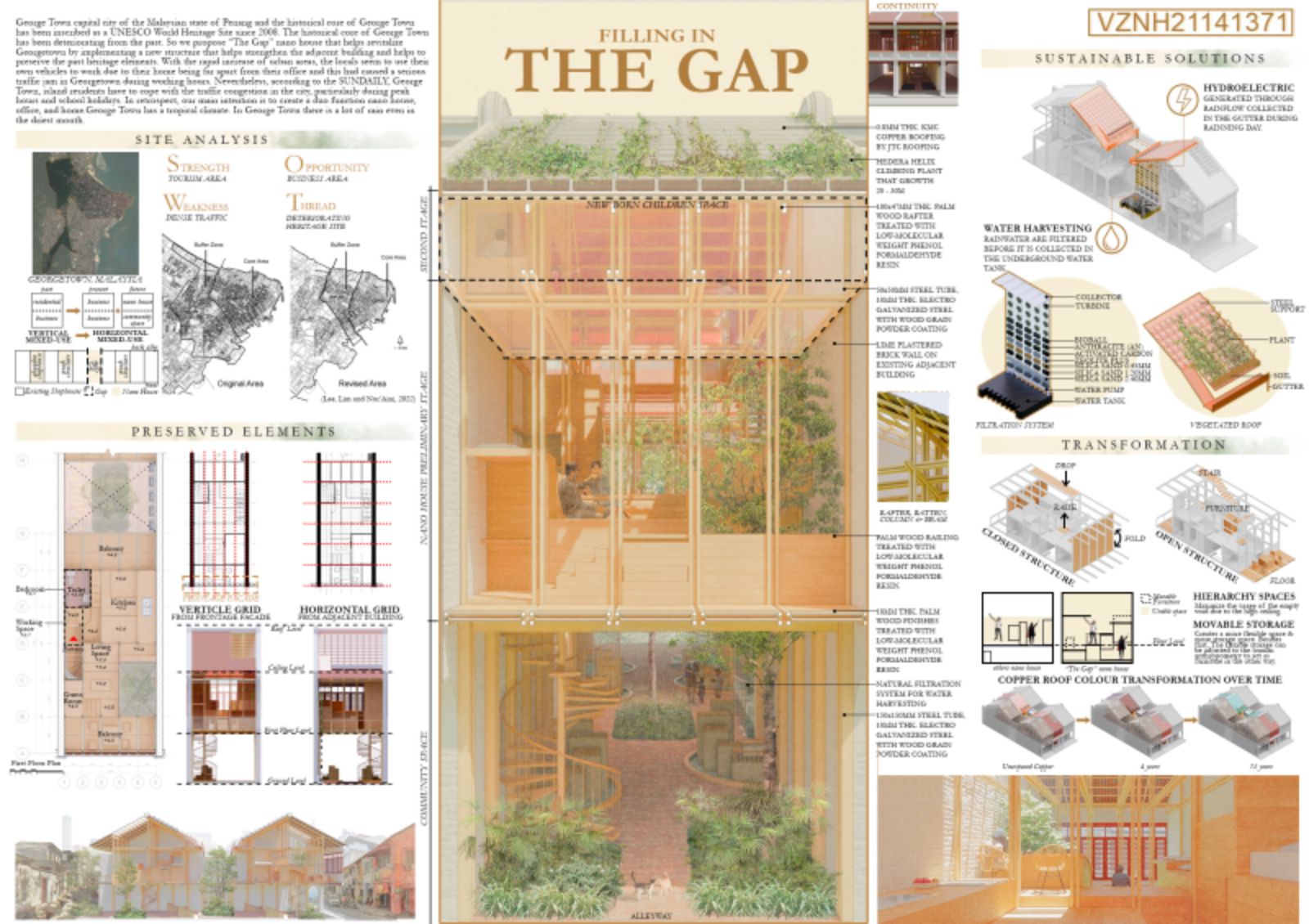
- Glass Dome by Yuting Zhang (United States)
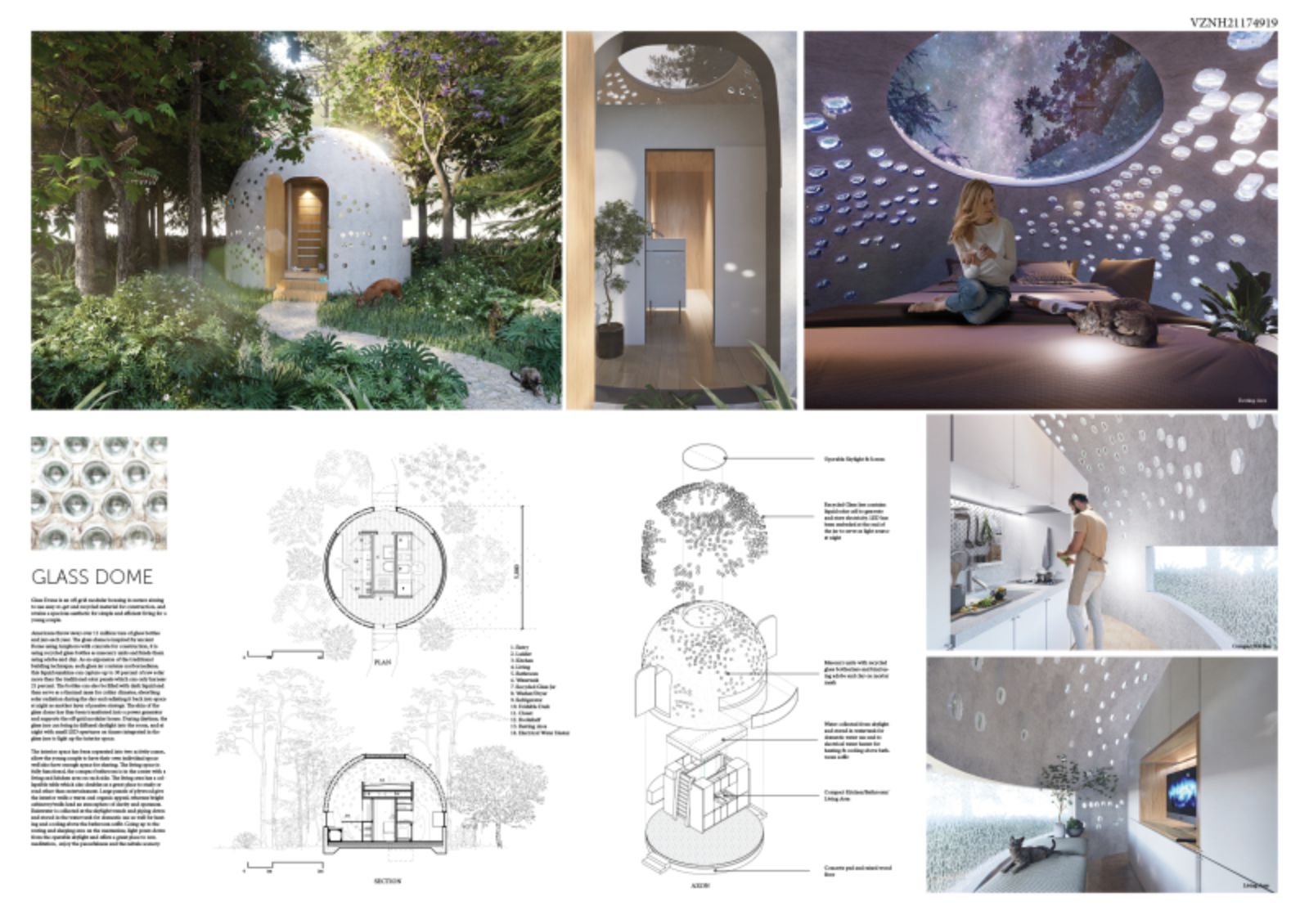
- Micro Culture Living by Ainna Sabri (Malaysia)
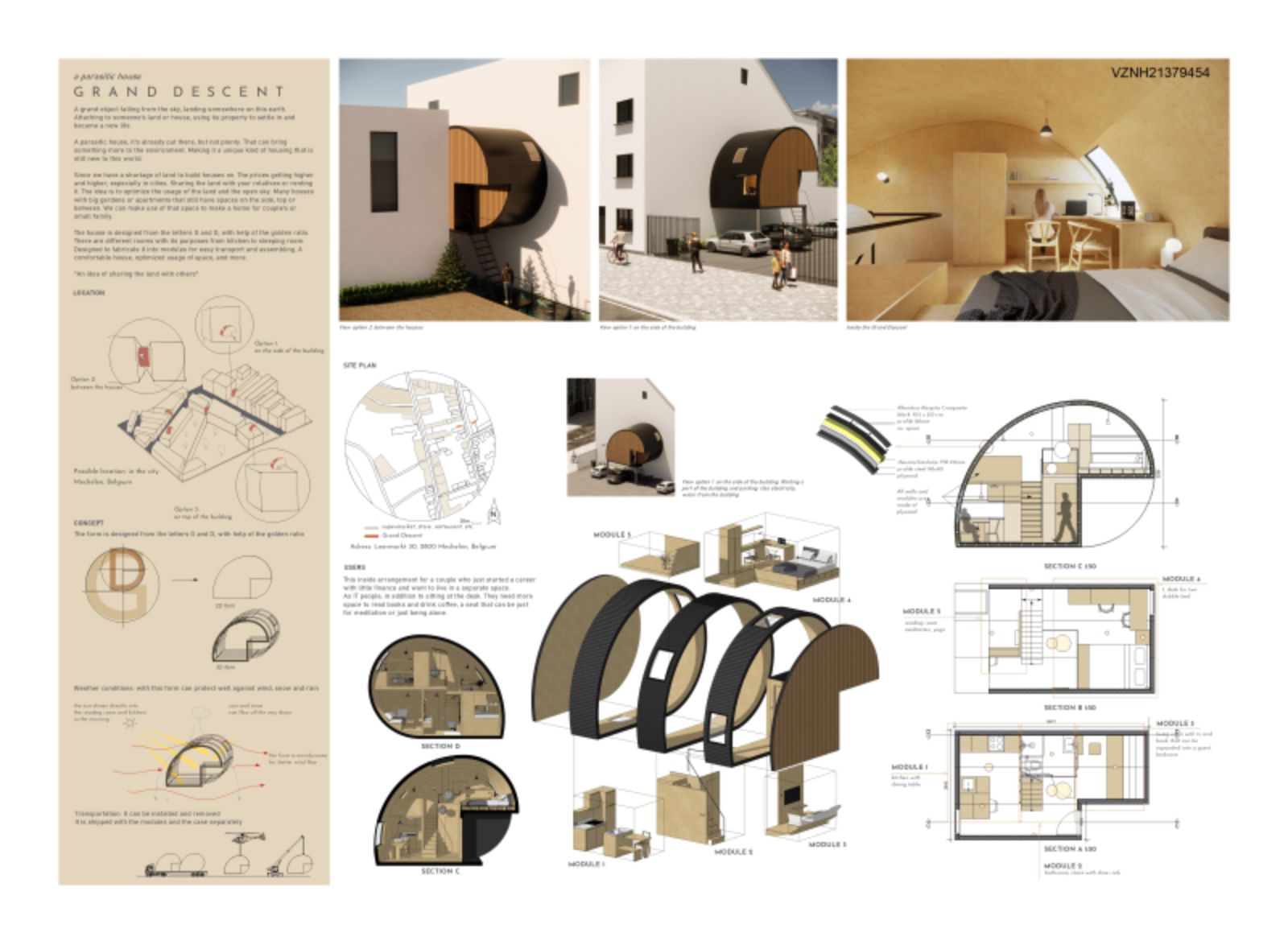
- Adapt To Time by Varsha Km – Sandesh C (India)

- Fin House by Prerna Kejriwal – Nikhiil M Kannan – Amogh Deshpande (India)
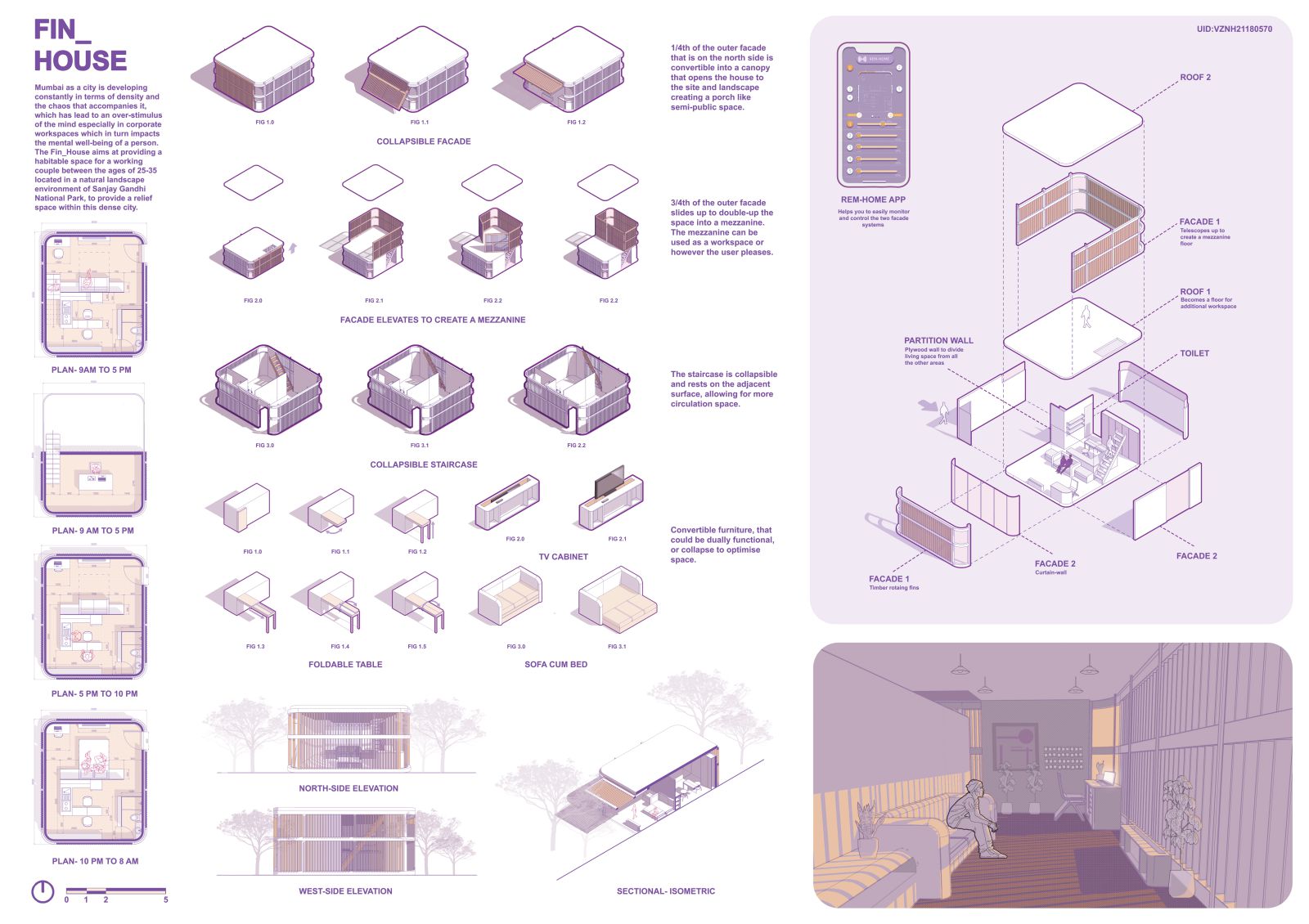
- Nano-Adapt by Thomas Goessler (United Kingdom)
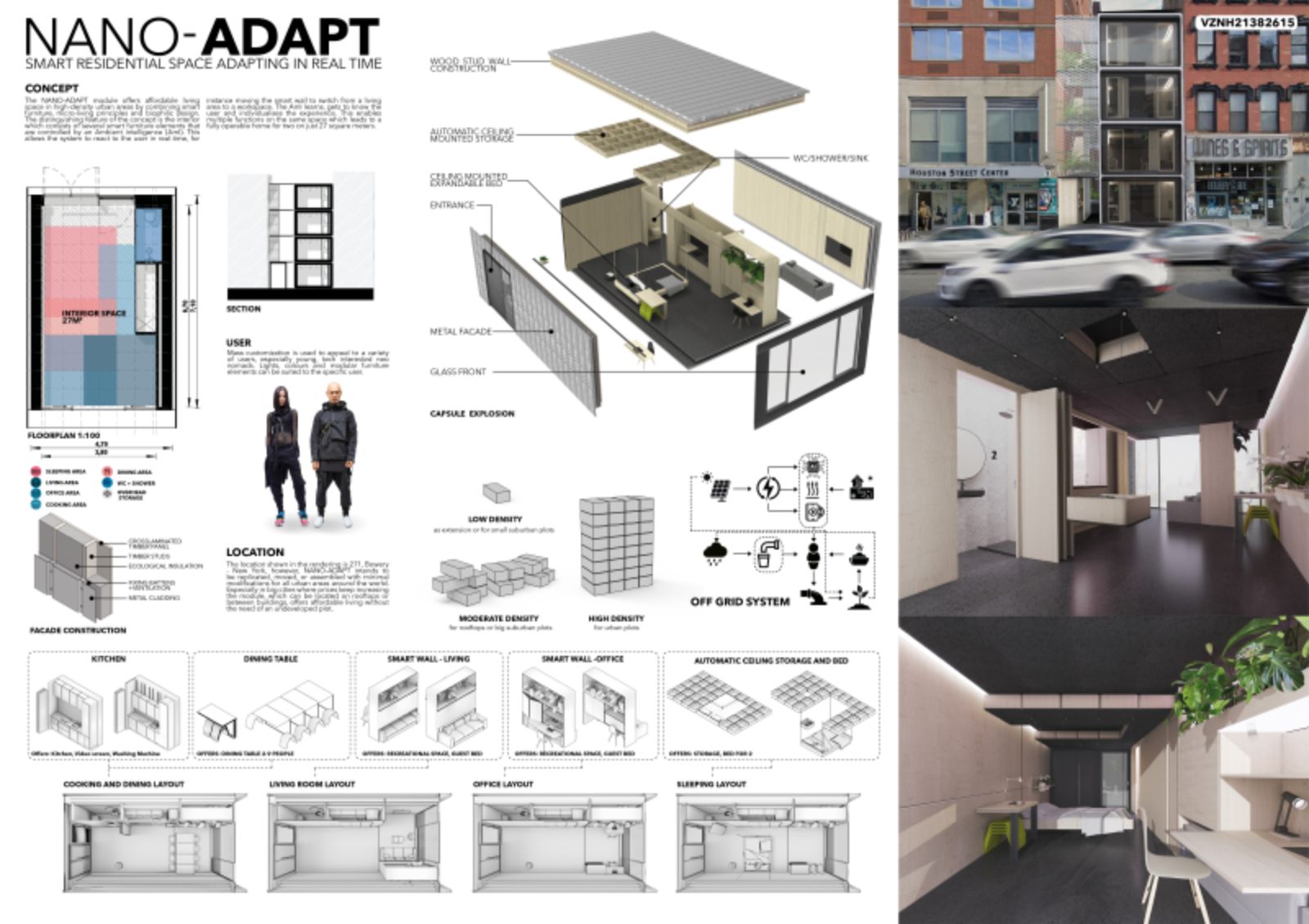
- Grand Descent by Tran Thi Tuyet Trinh (Belgium)
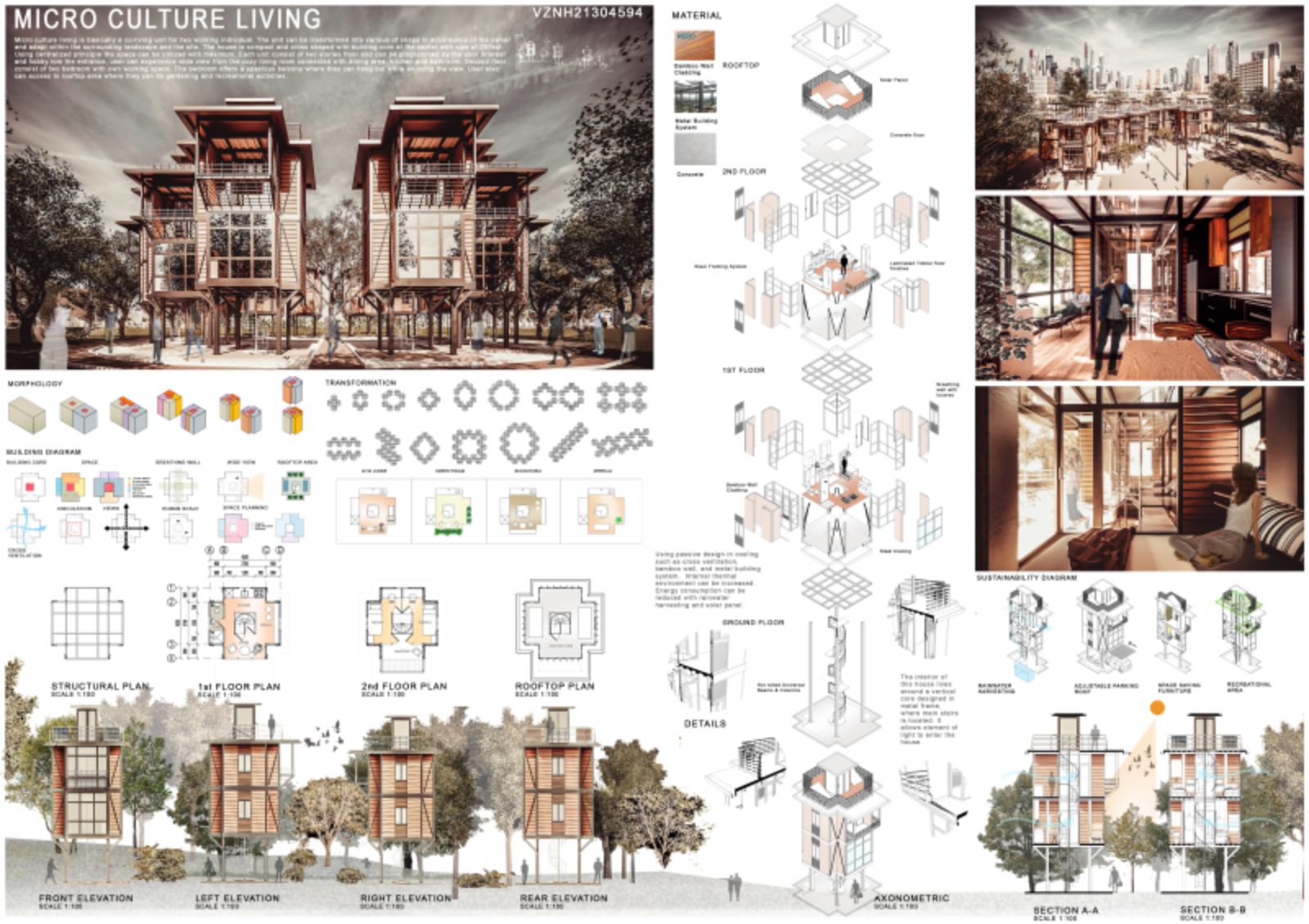
- Corral Space by Annabelle Ernest – Bavish S.m. (India)

- From by to Nature by Sudhan S (India)


